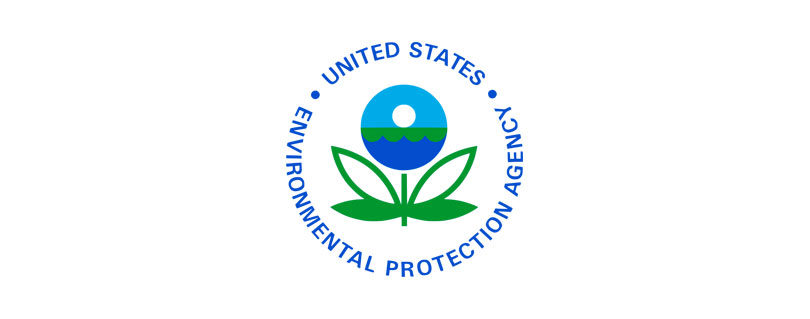EPA Announces a $425,000 Environmental Justice Collaborative Problem Solving Grant to Children’s Environmental Literacy Foundation
Publilshed by the U.S. Environmental Protection Agency (EPA)
DALLAS, TEXAS (April 25, 2024) – Today, the U.S. Environmental Protection Agency is announcing the Children’s Environmental Literacy Foundation (CELF) is receiving $425,616 to advance their goal of cultivating a society of individuals with a deep understanding of the dynamic interdependencies between human and natural systems. This project will develop the next generation of environmental justice advocates, equipped with Science, Technology, Engineering, Arts, and Math (STEAM) skills to protect local watersheds and enhance climate resilience through school-community collaboration.
“Science, technology, engineering, arts, and math have always been the core of student education, and with this funding we will see students use these skills to develop innovative climate resilience strategies in collaboration with their communities,” said Regional Administrator Dr. Earthea Nance. “The Greater Houston area faces multiple challenges including extreme weather, environmental justice, and the energy transition. Diverse ways of knowing will be needed, so it is crucial that we help equip the next generation with knowledge in all of these disciplines. I would like to thank our partners for this event, especially the Children’s Environmental Literacy Foundation for prioritizing children’s health and education.”
“I am thrilled that the EPA is investing in the children of Houston, inspiring the next generation of environmental justice leaders to build safe and healthy neighborhoods for all,” said Congresswoman Sylvia Garcia. “From field trips into our local waterways to fun, hands-on experiments about air quality and water testing, these federal funds are going to have a lasting impact on the students and teachers in low-income areas in my district.”
“Having the support of the EPA in advancing this important work is key to demonstrating that the U.S. is serious about pursuing a clean and healthy environment for all of us. In awarding this grant, the EPA is recognizing the critical roles that teachers, students, and impacted communities play in defining what a more sustainable future can look like,” said Executive Director Tara Ocansey of Children’s Environmental Literacy Foundation.
“This project will help area students explore the world around them while nurturing their interest in environmental sustainability and science, technology, engineering and mathematics (STEM) subjects, which aligns perfectly with the mission of Rice’s Office of STEM Engagement,” said Carolyn Nichol, Director of the Rice Office of STEM Engagement. “The students will connect with Rice researchers, grad students and scientists to help collect data and interpret it, and there will be additional opportunities to engage their teachers on our campus. We’re extraordinarily grateful for this support from the EPA.”
“The Galveston Bay Foundation has worked for almost 37 years to preserve and enhance the Galveston Bay region through our efforts in habitat restoration, land conservation, water protection, environmental advocacy, and environmental STEM education. This project directly correlates with our education goals to instill knowledge and appreciation of the Galveston Bay ecosystem, inspire participants to break down barriers and open themselves to new experiences, and empower students to become life-long advocates for a resilient Galveston Bay. Along with connecting with students during field data collection, we look forward to hosting teacher and administrator professional development retreats at our Trinity Bay Discovery Center in Beach City where educators will have the ability to explore and experience Galveston Bay in a whole new way while learning how to incorporate place-based education in their classrooms. Providing such experiences to their teachers ensures that this learning will extend far beyond the life of this grant,” said Cindy Wilems, Director of Education, Galveston Bay Foundation.
The Children’s Environmental Literacy Foundation launched in 2003 with the mission to establish sustainability as an integral part of every child’s K-12 learning experience. Since initiating their program for Houston in 2019, CELF Houston’s Education for Sustainability and Civic Science programs have reached over 1,000 teachers and administrators, and over 36,000 students in Texas. This latest project will engage Title 1 middle and high schools in economically disadvantaged communities of Greater Houston and will deliver training focused on facilitating data collection and analysis while raising awareness of watershed stewardship strategies and solutions. The project will last three years and include several school districts, such as Channelview Independent School District, Aldine Independent School District, Houston Independent School District, and Pasadena Independent School District. CELF will also collaborate with several core partners such as Channelview ISD, Galveston Bay Foundation, and Rice University to engage with several community partners and parents through public educations events. The overall goal of this project is for students to use their skills and knowledge to contribute on local environmental justice issues and propose future climate resilience strategies for their communities.
The Greater Houston area has experienced major flooding events in recent years and has a significant number of underserved communities. Underserved communities are prone to disproportionate levels of pollution and climate change issues. With this funding and with CELF’s assistance, we are providing the resources for the next generation to identify pollution problems and develop innovation solutions that can be solved by community collaboration.
This grant reflects President Biden’s Investing in America commitment to tackling environmental justice and the climate crisis. Many communities with environmental justice concerns carry a disproportionate environmental and human health burden from environmental injustices. As part of Investing in America, EPA Region 6 announced over $1.4 billion that went directly into environmentally high-risk communities, which has created jobs, preserved critical natural resources, and encouraged environmental practices to maintain climate resilience.
Connect with the Environmental Protection Agency Region 6 on Facebook, X (formerly known as Twitter), or visit our homepage.
Read the full article at: https://www.epa.gov/newsreleases/epa-announces-425000-environmental-justice-collaborative-problem-solving-grant



